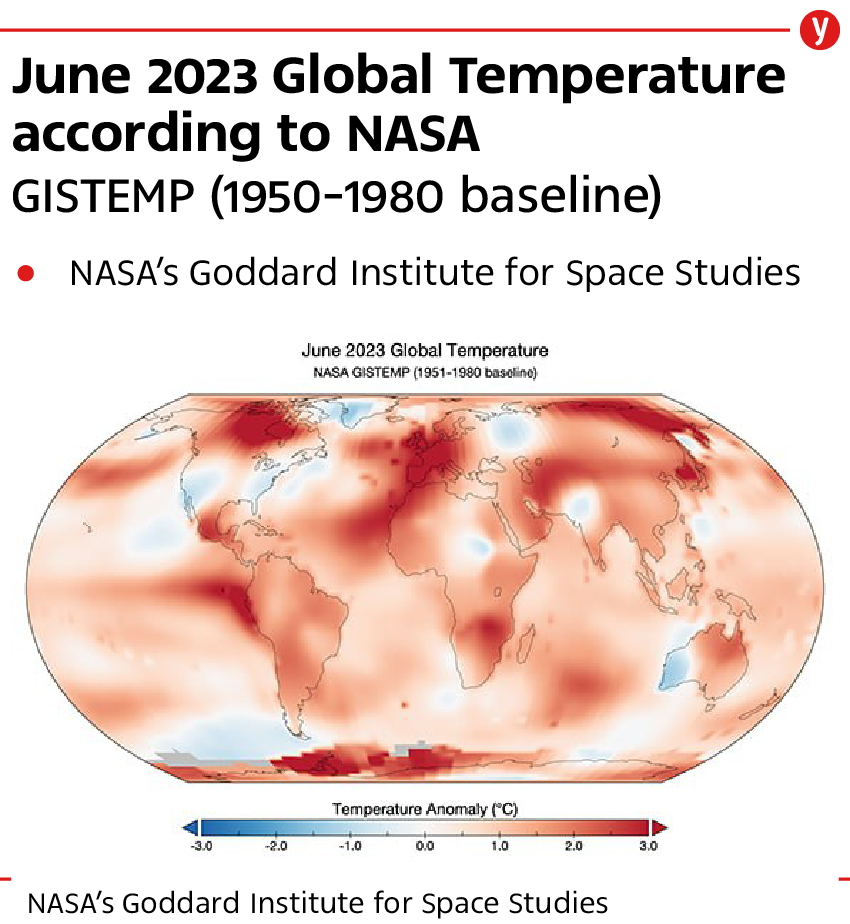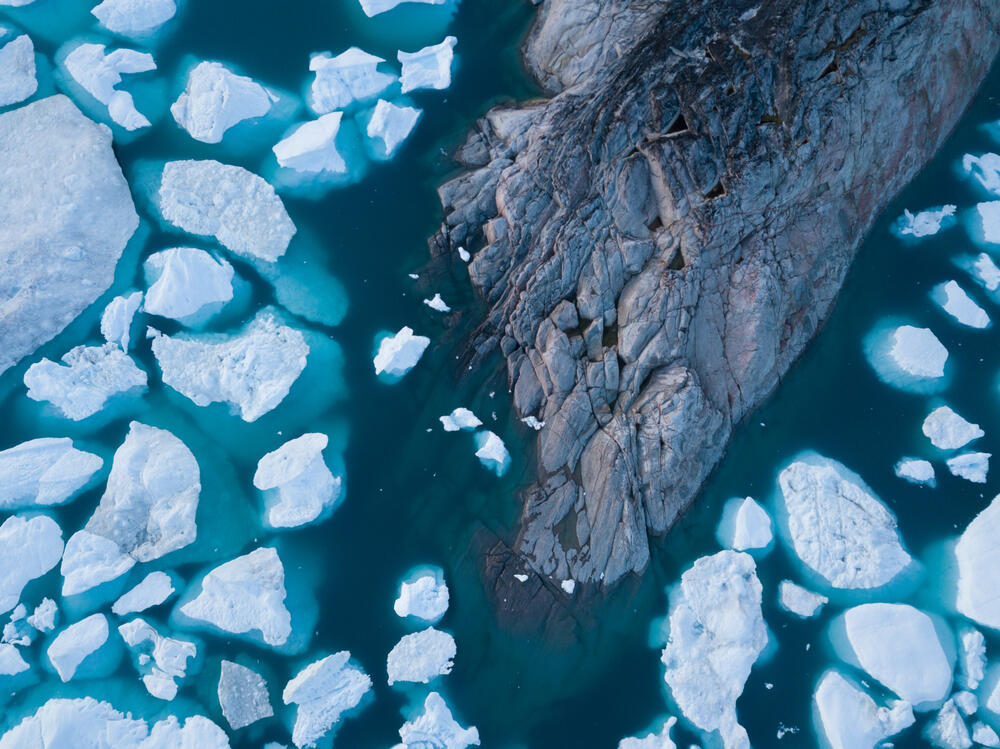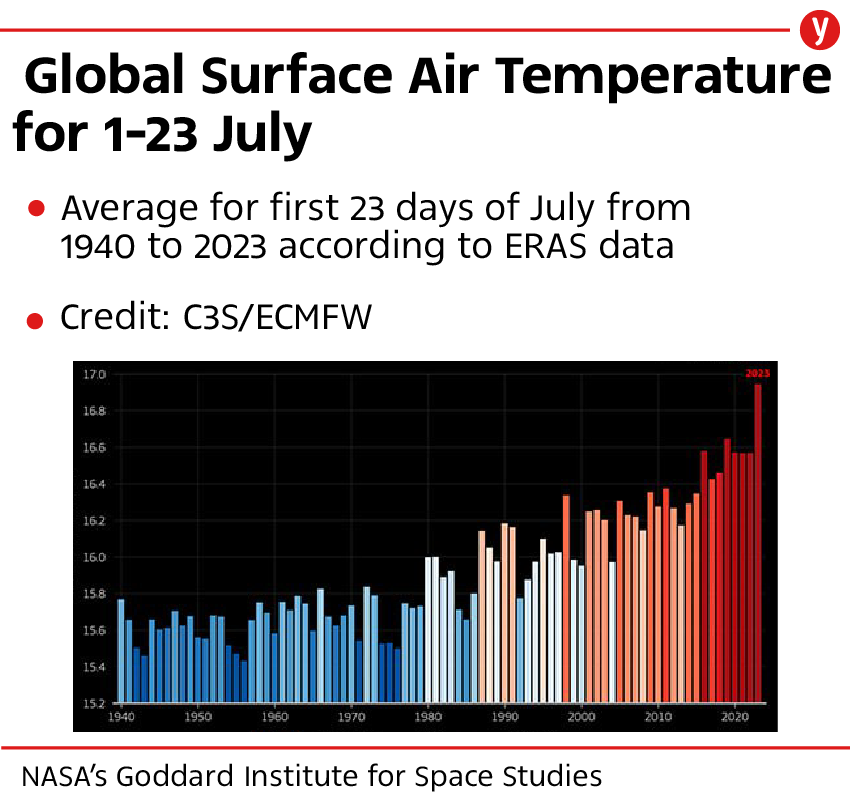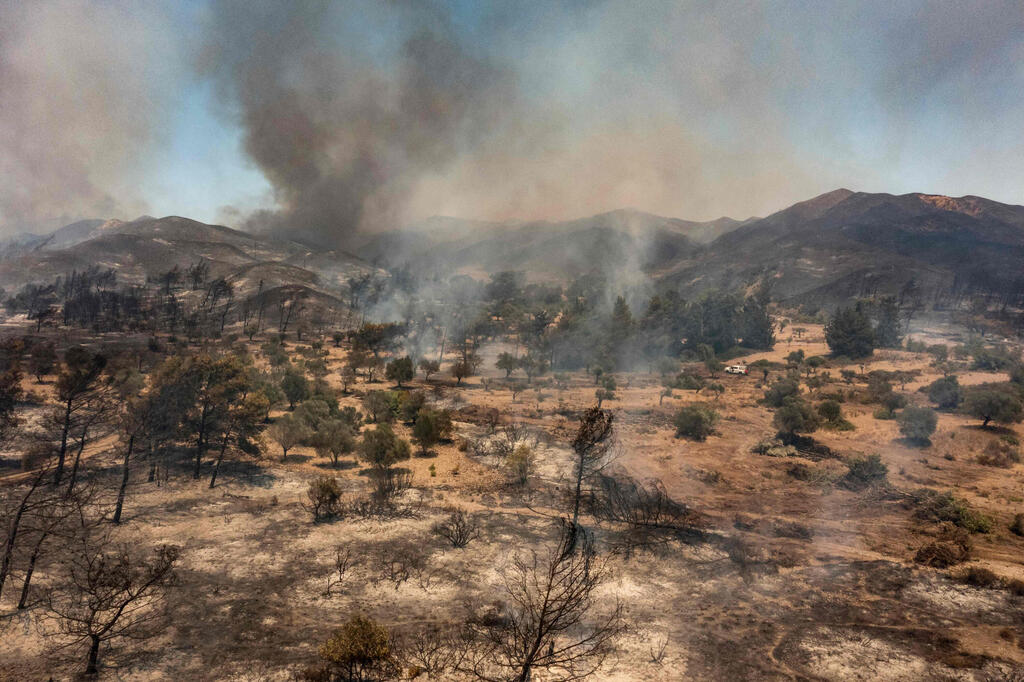Getting your Trinity Audio player ready...
The escalating cycle of record-breaking heat seems to be the new normal as we grapple with the realities of climate change. June 2023, which kicked off the summer in the northern hemisphere, marked the hottest June ever recorded since the start of climate measurements, a conclusion drawn by three independent studies conducted by leading global institutions.
More stories:
The extreme heat was recorded both at sea and on land. Unprecedented temperatures in Antarctica resulted in a record low in the average monthly sea ice volume for the second consecutive month. Over a million square kilometers of ice have melted there since the previous negative peak, which occurred in June 2022.
This vast area is equivalent to the combined territories of France, Italy, and Spain. Simultaneously, the global sea surface temperature broke the monthly heat record for the third consecutive month, with particularly extreme heatwaves in the waters of the Atlantic Ocean, stretching from West Europe to Africa.
The Pacific Ocean continues to warm in its tropical parts, where the El Niño weather event is expected to continue to strengthen, showing its effects in the coming months and beyond.
On land, the extreme heat exacerbated the drought in Canada, sparking unprecedented wildfires and heavy smoke, which affected millions of people in both Canada and the United States.
Later in the month, a prolonged heat dome engulfed large parts of Mexico and the state of Texas in the United States, causing scorching conditions and breaking daily heat records. Northwestern Europe also saw its heat records shattered, leading to unprecedented fish deaths.
Extreme July
Hopes for respite from escalating temperatures in the month of July were quickly shattered as the world grappled with relentless heatwaves, devastating floods, and raging fires. A severe heatwave hit southern Europe and caused severe fires, especially in Greece.
Excessive mortality, outbreaks of diseases, ecological damage, power outages, and damage to both agriculture and the economy – all were recorded in the wake of the ongoing heat waves.
The hottest day ever recorded in the world occurred at the start of the month, with every subsequent day in July surpassing the previous record. The scorching July heat shattered previous records by a substantial margin.
Research into the current heat waves reveals that they are a result of global warming. It was found that the heatwaves in the United States and Europe could not have occurred without the process of global warming that occurs due to human activity.
These heatwaves are now expected to recur every 10-15 years. The heatwave currently affecting China is a rare event that, without global warming, would occur once every 250 years. Now, however, an event of similar severity is expected to occur every five years on average. If the world continues to warm, heat waves will become increasingly frequent and intense.
If the average global temperature rises by two degrees Celsius compared to 1850-1900 levels - a very plausible scenario based on current predictions - heatwaves such as those that affected the United States and Europe this month will occur every 2-5 years. If we fail to curb our greenhouse gas emissions, extreme weather of the type we experienced this year will become the norm in the near future.
"For vast parts of North America, Asia, Africa and Europe – it is a cruel summer. For the entire planet, it is a disaster," United Nations Secretary-General António Guterres commented on the extreme heat waves. "And for scientists, it is unequivocal – humans are to blame. All this is entirely consistent with predictions and repeated warnings. The only surprise is the speed of the change."
Concurrently, reports from Florida indicate mass deaths of corals, which are starting to bleach due to the extreme heat wave. Sea surface temperatures near the coast have reached around 38 degrees Celsius. If validated, this reading could set a new world record.
"This is not a partisan issue; everyone will be affected. The climate crisis impacts our way of life and all life on Earth," said Scott Winters, CEO of the Coral Restoration Foundation.
"Hopefully, the dire situation we now face will catalyze broader awareness and stimulate aggressive action to address climate change, triggering greater investment in the restoration and conservation of our planet’s life, including our precious coral reefs."
Heatwaves also pose a significant risk to human lives. In severe cases of heatstroke, for instance, the body may lose its ability to cool itself, potentially leading to severe damage or even death. Last summer, an estimated 60,000 people died in Europe due to heat waves.
On a personal level, one can reduce the risk by adapting one’s behavior and being aware of dangers. Staying in cool areas, drinking water frequently and limiting physical activity during the hottest hours of the day are recommended.
At the municipal and national levels, initiatives such as shading public spaces, tree planting, issuing early warnings about impending heatwaves, launching public information campaigns, and installing faucets and water sprays in public spaces are all important. The widespread use of air conditioning in enclosed public spaces, such as shopping malls, is also a crucial factor in mitigating heatwave risks.
And behold, the forecast for yesterday
The breaking of temperature records pertains to the air temperature at sea level and on land across the globe, up to a height of two meters. The resulting figure is an average of the temperature throughout the day and night across the world, including all its deserts, forests, mountains, seas, and glaciers.
There are various methods to estimate this average temperature, usually with the help of supercomputers to integrate numerous field measurements with computational models
Local weather is constantly monitored in many different ways. These include, among other things, meteorological stations, ships, sea buoys, satellites, weather balloons, research stations, airplanes, and UAVs. However, the information we have is far from complete, even with respect to surface temperature.
5 View gallery


June 2023 Global Temperature according to NASA GISTEMP
(Photo: NASA’s Goddard Institute for Space Studies)
Climate models are based on physical laws and on the extensive data collected worldwide over the years, and they assist us in filling the knowledge gaps in places and times where data is scarce.
These models play a crucial role in bridging the gaps in our understanding, enabling climate scientists to estimate the world's current temperature, as well as the temperature that prevailed across the globe in recent decades, a period when measurements were significantly less extensive, with a high degree of accuracy. This is akin to a global weather forecast, but rather than predicting the future, it fills the knowledge gaps regarding the past.
Cooling cloak
Air conditioners efficiently cool our homes and cars, but their significant energy consumption is a financial burden and exacerbates the climate crisis. Consequently, in recent years, scientists have been trying to develop technologies for passive cooling that do not require energy investment.
Chinese scientists have recently developed an efficient thermal cloak that maintains a comfortable temperature in both summer and winter, and demonstrated its efficiency by covering a parked car in hot and cold conditions.
The cloak cooled the covered car to 23 degrees Celsius at noon, when the outside temperature was 27 degrees, while an uncovered parked car's temperature soared to 51 degrees. The cloak also slowed down the heat loss from the car during a winter night, maintaining a temperature five degrees Celsius higher than that of an uncovered equivalent vehicle.
The thermal cloak comprises two parts each filling a unique function. The upper part efficiently reflects solar rays into space, similar to simple white paint, but with much higher efficiency. In addition, this layer efficiently emits infrared light, also known as heat radiation, facilitating cooling.
The Earth's atmosphere is transparent to these heat radiation frequencies, allowing the radiation to easily escape into space. The Earth's atmosphere is transparent to the frequencies of this heat radiation, so the radiation penetrates easily and exits into space.
The upper layer of the cloak is made of tiny glass fibers coated with a substance called boron nitride, arranged in a distinctive structure, making the cloak almost completely impervious to the sun’s radiation heating effects, and also self-cools by efficiently emitting heat radiation.
The bottom layer of the cloak functions like a smart aluminum foil, reflecting all radiation wavelengths, including sunlight and infrared radiation. By doing so, it prevents the heat radiation emitted from the upper layer from reaching the covered surface, thus cooling it on hot days, explains materials scientist Jiachen Li from the University of California, Berkeley, who wasn’t involved in the cloak’s development.
In addition, the lower layer reflects the heat radiation emitted from the covered surface, thus preserving its heat during the winter.
Li argues that the reason for the great success of the dual-layer cloak structure lies in the limited heat transfer between it and the surface it covers. However, for this same reason, the new development is less suitable for cooling building roofs, where heat transfer is critical.
For this purpose, several types of white paints, which function much like the cloak’s upper layer, have been developed in recent years. According to the authors of the paper, the cloak was designed for easy industrial manufacturing, and that it would be suitable for many versatile applications outside the household, and even in space.





